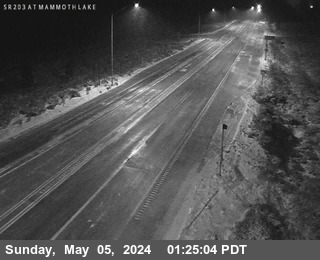Brought to you by Howard Sheckter
Cloudy Skies this Morning to give way to Sunshine by Wednesday…Seasonal Temperatures or Above Returning to the High Country…..Fair Through the Weekend…The MJO is on the move again…
Tuesday January 29, 2013
Pretty big Arctic system dropping out of Alberta, Canada this morning. Strong North/South 130kt upper jet along the NV/UT border. Eastern Nv through the Rockies could get some platinum powder today…. Just NE winds over the Crest for Mammoth today. Clouds may kick off a few flurries as well. Not much else going on for Eastern Ca other than a gradual warm up. Temps will invert again, going into the weekend. Highs in the 40s at 8K and lows moderating into the twenties.
The weekend storm brought about a foot total to the main lodge. Mammoth Mountain continues to have a base in the 10 to 16 foot range. The atmosphere remains in an “El Nino Mode” with High AAM and the MJO in Phase 7. The good news this morning is that tropical convection has finally started to shift east now…..As it moves east, there may be a period of wet precipitation developing on the west coast next week. The NCEP Global Ensemble Forecast System for the MJO shows it into Phase 8 by the weekend and strengthening. The Dweebs belive that the global models may begin to show some interesting pattern changes in the next few days slated for next week.
These would tend to be wet storms for the coastal regions that would tend to weaken inland.
Here is the most recent post from the CPC:
For next week:
As we move into Week-2, MJO associated enhanced convection is favored to continue across parts of the south Pacific and Brazil and develop over areas of central Africa, southeast Africa and extending northeast to the western Indian Ocean. Moderate confidence is indicated for the eastern portions of these areas due to timing issues as the impact of the MJO would enter this area late in Week-2. It is highlighted here because often KW (Kelvin Wave) activity can precede the main MJO convective envelope. Drier-than-average conditions are forecast to shift eastward with the MJO and impact the Maritime continent and far western Pacific.
Weeks 3 and 4:
The MJO will continue to impact the extratropics in the coming weeks. MJO associated convection has shifted the longwave pattern eastward across the Pacific-North America sector and on average a “positive PNA” is favored with a ridge across western North America and a trough across eastern North America. Below-normal temperatures on average are favored across parts of the central and eastern U.S. into the first half of February. If the MJO remains robust through
mid-February and enhanced convection once again enters the Indian Ocean, chances may become elevated for above (below) normal temperatures
across the eastern (western) U.S. in late February. This is generally consistent with the latest CFS forecast guidance. In the mean, the MJO would also support drier-than-average conditions over much of the western CONUS, although the MJO would favor an *”enhanced subtropical jet” later in January into early February during the time when the RMM index is located in phases 8 and 1.
*Possible impact WX west coast
Note: Since this post, the MJO has been slower to begin its move east. As a result, the enhanced subtropical jet referred to may occur a little later in February…IE next week. See: http://www.cpc.ncep.noaa.gov/products/precip/CWlink/MJO/CLIVAR/ncpe.shtml
Dr Howard and the Dweebs………………………:-)




